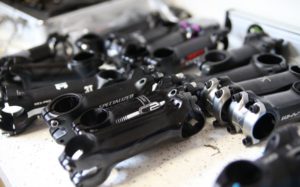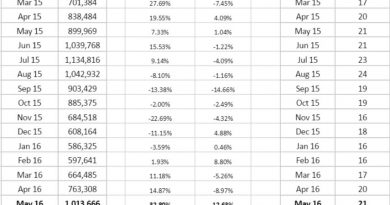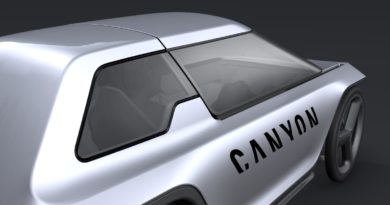How standalone bike fitters are tapping in to new service-led business
With profitability high and a return on investment often not too far on the horizon, Duncan Moore asks, “what’s life like as a standalone bike fitter? Two veteran bike fitters with different approaches tell their stories…
There’s a phrase becoming popular in the independent cycle trade at the moment – ‘the internet can’t fix your bike’ – it’s been coined to demonstrate that there are some services that are only available at bricks and mortar stores, such as bike fitting.
Once the preserve of professional riders, a fit is now seen as a necessary step by many riders as their interest in all things cycling progresses and there’s no doubt that it can be used as a means of generating revenue for a store. The fit itself brings in money and then there is the sale of parts needed as a result of the fit bar, stem, saddle. But does the space needed and the staff training justify offering it as a service?
Former professional racer Adrian Timmis closed his regular cycle retail business in 2017 to concentrate on just offering bike fitting and coaching services. When Timmis announced the closure, he said: “Bike fitting is still the biggest part of what I do and I don’t need a space as big as I have now to do that. The retail side of things is getting tougher and tougher. The high street is only a smartphone and tablet away, where people can shop 24-7 and find the best price within minutes wherever they are, me included.”
Without a traditional shop, front to display his services Timmis now relies on the very thing that forced him to close his business – the Internet. “Most of my custom is either word of mouth or from the Internet – cycling forums, Facebook and Twitter.”
One downside of this change in business operation is that he is now doing slightly fewer fits. He then goes on to suggest that more cycle stores are opting to offer fitting as a service in order to increase instore footfall because so many customers now shop online.
Yet, despite these challenges, Timmis is adamant that he has made the right choice with his business. “If I had my time over again, I would not go into retail. It’s time consuming and there’s all the overheads, but mainly, the Internet has killed off IDBs as many of the big online retailers offer stuff at (and sometimes cheaper) than small retailers can buy at trade.”
That ability to buy at low cost online is having an impact on the brands of bike that Timmis is now being asked to fit riders to. “One of the most popular bikes I see is Canyon, bought from direct sales.” But perhaps more surprising than that is the fact that among his customers are those that have bought bikes from shops that offer a fitting service but have chosen not to use it. Timmis puts this down to the fact that, “fitting systems don’t fit; the fitter fits.”
Having said that, bike fitting alone is not the only service offered by Timmis. He also offers custom footbeds for shoes and tailored training plans. He simply describes these as, “add-ons but there’s always the option to grow them.”
It is add-ons like these that Timmis sees as the future for cycle retailers, saying: “Small independent bike shops will be more service led in the future, so they’ll be more like cycling hubs as the face of retail has changed. In the next few years, it’s likely to change again, with more own-brand shops and small independents focusing more on workshops and if they can do it, fitting.”
Concentrating on fitting rather than trying to compete on sales with online retailers is what led Tim Allen to establish Soigneur Bike Fitting in central London in April of this year, after ten years working in IBDs.
While primarily a stand-alone bike fitting operation, Allen has realised the potential revenue of being able to retail complete bikes: “The main idea behind the business is to establish a fitting centre but I am able to source new bikes if the customer wants a bike built to fit using the advice I provide during the fit session. However, I don’t carry any bikes in stock,” says Allen.

“I am able to get bikes or frames through the partnerships I’m establishing with other IBDs and brands and I have accounts with the majority of the major distributors, too.” By operating this way Allen feels he is not only able to benefit from the sales of supplying the parts needed to fit a bike correctly (saddle, stem, etc) he also has the additional benefit of the profit on complete bike sales without the overheads associated with carrying a wide range of bikes in stock.
Allen’s model of collaborative business is not restricted to accessing a variety of new bikes for his customers. “A main feature of what I do is collaborative work with other professionals. I have a BSc (Hons) Sports & Exercise Science and so appreciate the input physiotherapists and nutritionists can have helping riders get the very best performance not just having a fit in isolation,” he explains.
An example of how he puts this into practice is his use of insoles to correct pedalling issues. “I sometimes use off-the-shelf shoe inserts as custom moulded ones don’t last long enough, but I prefer to refer clients to a podiatrist to get the best solution for foot issues. It is all about working with other sports professionals to get the very best result.”
That idea of working with professionals in other fields extends to bike building, with Allen working more closely with a number of custom frame builders to translate bike fits into bespoke machines.
Since opening, Allen has been consistently doing six to eight full fits a week, a not inconsiderable number given how young the business is. Like Timmis, he puts this level of success down to the combination of word of mouth recommendations, including former clients from his days working in IBDs, and the use of social media. He especially notes that Instagram is proving very successful for building the brand’s awareness. A large part of that is down to posting images of the fit studio showcasing the Purely Custom fit bike, which Allen centres his fittings around.
Talking about his fitting rig, Allen says: “This fully adjustable fit-bike has unrestricted flexibility and increased efficiency in adjusting the client’s position. With it, I can quickly assess changes in crank lengths, saddles and handlebar widths, and reverse-compare changes to the client’s original position in moments.”
Referring this back to Timmis’ comments about the fitter doing the fit, not the system, Allen also uses motion capture technology and fitting protocols that include aspects of Specialized Body Geometry Level 1 & 2 and Trek Precision Fit Level 1 & 2 courses.
While any shop can say it offers bike fitting, it is the expertise and willingness of the bike fitters, such as Timmis and Allen, to continue to learn new techniques that make the difference between being able to convert appointments for fits into sales of parts and repeat business.
 While Timmis and Allen have opted to step away from traditional retail models they appreciate it may not be a viable option for other fitters currently based in IBDs. However, it does show that by thinking differently there are alternative routes to market; bike fitters could consider offering their services on a freelance basis to more than one shop. In doing so, the shops they work with save on the costs of training staff and potentially then losing them once training is complete and neither does the fitter need to pay for a space to carry out fits. The benefits continue with the shop getting the sales from parts needed to complete the fit. It is a collaboration of the type being undertaken by Allen working with those who can provide the knowledge or skills you lack for mutual benefit.
While Timmis and Allen have opted to step away from traditional retail models they appreciate it may not be a viable option for other fitters currently based in IBDs. However, it does show that by thinking differently there are alternative routes to market; bike fitters could consider offering their services on a freelance basis to more than one shop. In doing so, the shops they work with save on the costs of training staff and potentially then losing them once training is complete and neither does the fitter need to pay for a space to carry out fits. The benefits continue with the shop getting the sales from parts needed to complete the fit. It is a collaboration of the type being undertaken by Allen working with those who can provide the knowledge or skills you lack for mutual benefit.
The International Bike Fitting Institute has laid out a travel grant offering for those wishing to train as a fitter. to find out how to access this funding, click here.
Related: How idMatch is enabling fitters to complete more jobs in a day by freeing up dead time.



